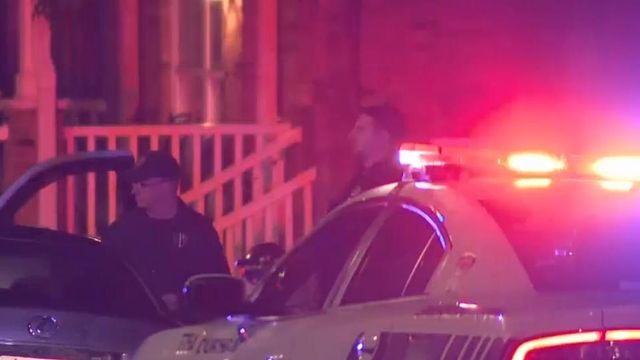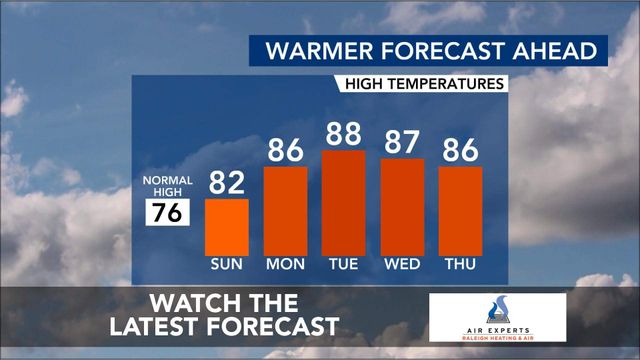Duke study on ShotSpotter shows some promising metrics, yet lingering community skepticism
For more than a year, researchers at Duke University studied gunshot detection technology ShotSpotter, examining two key questions: How effective was it, and how did the community feel about it?
WRAL Investigates' Sarah Krueger spoke with the researchers ahead of their Thursday afternoon presentation to the Durham City Council.
"When Durham decided to pilot ShotSpotter technology, they reached out to the Wilson Center ... asking if we could do an independent evaluation of that pilot," explained report co-author Angie Weis Gammell, Policy Director at the Wilson Center for Science and Justice at Duke Law. The independent research was performed at no cost to the city and culminated in two reports.
"It's a difference between qualitative and quantitative," explained Phil Cook, Professor Emeritus of Public Policy and Economics at Duke, who was also one of the lead researchers.
Cook, whose academic focus is on gun violence, explained the Wilson Center worked closely with the Durham Police Department to perform data analysis of the information collected during the City's one-year pilot program of the technology, which ended in December. ShotSpotter uses sensors, placed in a three-square-mile radius near downtown, to detect gunshots and notify police.
"I think it's reasonable to say that ShotSpotter performed as advertised," Cook said. "It actually notified the police of many more gunshots than police would've known about from just the 911 calls they were getting."
Data from the Durham Police Department shows about three quarters of the roughly 1400 ShotSpotter alerts in the year did not have an associated 911 call.
Cook said the Duke research was unable to conclude if ShotSpotter resulted in a reduction in violent crime. He says it did show that the ShotSpotter alerts improved officer response time, allowed officers to collect "a lot more evidence than they would have otherwise," and led to an "increase in the number of arrests that were made at the scene of the gunfire."
The report provides this example:
"A shooting on the evening of May 6, 2023, near the intersection of Fayetteville Street and E. Umstead Street resulted in a ShotSpotter alert. Police arrived at the scene and stopped a private vehicle that was transporting a gunshot victim. (He was ultimately treated at Duke ER and survived.) The shooting had not otherwise been reported. Multiple shell casings were found at the scene, and an analysis of these shell casings assisted the police in arresting a suspect the following week. He was charged with felony assault with a deadly weapon inflicting serious injury and discharging a firearm within the city."
In one situation, Cook says the technology likely saved a life. The report details the incident:
"On July 25, a shooting in the target area (Colfax Street and Linwood Avenue) resulted in several SS notifications. Officers arrived at the scene less than four minutes after the shooting, and found a victim with life-threatening injuries. They administered first aid to stop the bleeding, and the victim survived. In this case there was a 911 call received 47 seconds after the first SS alert. It is plausible, though uncertain, that the quicker response enabled by ShotSpotter saved the victim’s life."
"I think [ShotSpotter] succeeded in the sense that it did push the needle in making gun violence investigations somewhat more productive," Cook said. "We don't offer a conclusion, despite that degree of success, of whether it was worthwhile, because of course on the other side of the ledger there are costs."
Cook said those costs include financial costs (a three-year contract with ShotSpotter is estimated to cost $658,500) and time costs, since officers were called to so many more shooting scenes they would otherwise have not known about.
For the qualitative study assessing community sentiment to ShotSpotter, Gammell says she and her team interviewed 30 people who live in ShotSpotter's radius.
"The reason we did this is because we thought if we're going to look at how ShotSpotter is performing, it's also really important to know how is the community feeling about it," she said. "It's something that no other researchers had really done previously."
Durham Police Chief Patrice Andrews said it's significant that nearly 80 percent of the shooting reports to police were initiated by ShotSpotter.
"I do want to just publicly commend my entire team that worked this year on probably one of the most groundbreaking pilots for this technology," Andrews said.
Gammell said community members had mixed opinions of the technology, yet more were strongly opposed to it than were strongly in favor.
"Reasons for that seemed to stem more from a lack of trust with policing as an institution and pre-existing skepticism and distrust," she explained.
Ten of the respondents were on the fence, wanting more information about it.
"We didn't have any participants of the 30 who had observed any negative impact on policing after ShotSpotter had been implemented," Gammell told WRAL.
Even prior to the rollout in Durham, some residents were skeptical of the technology, fearing it would lead to over-policing, and that it posed privacy concerns.
In a memo to the City Manager encouraging the city to restart ShotSpotter with a three-year contract, Andrews wrote the department had received no complaints about officer conduct during the pilot.
While the Wilson Center reports do not offer city council a recommendation on whether to reinstate the technology in the City, they hope it will be helpful information for Council members, the Durham community, and beyond.
"I think absolutely other cities can learn from the experience in Durham," Gammell said.
Six other cities in North Carolina currently have ShotSpotter, including Fayetteville, Wilmington, Rocky Mount, Goldsboro, Winston-Salem and Greenville.













